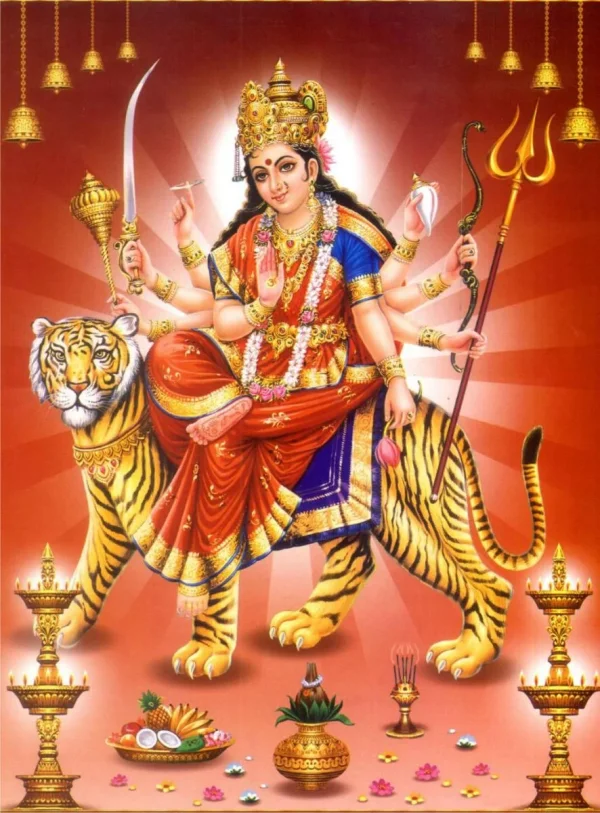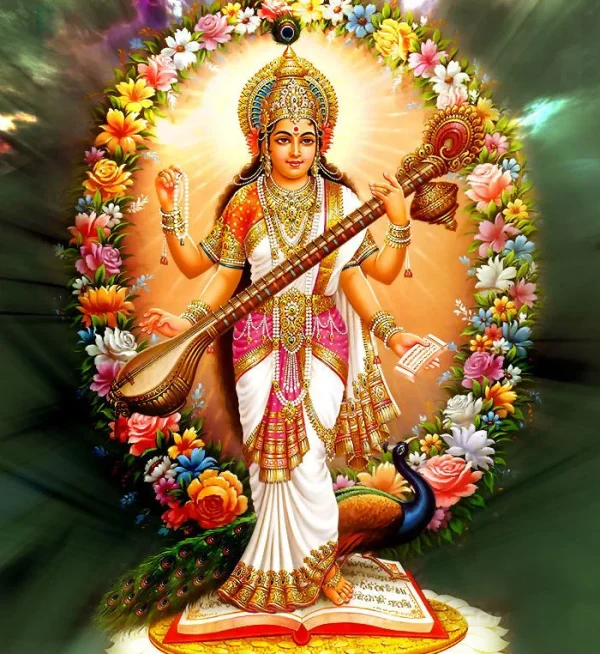The most distinctive feature a society, of its people is its culture. It is that foundation upon which the society is built. There can’t be a society or a race without its set of values, rites and rituals. It is the collective knowledge, shared beliefs and heritage – all parts of what comprises culture that functions like a root holding the tree onto the ground; thus binding people to one another forming a society. Every nation and every race has its own culture and this in itself has been the source of attraction for many an outsider. And while speaking of multiple cultures, there is no other land cradling cultural diversity than India. One can find many a foreigner here delighted and enchanted with the culture, the customs and the religious festivals observed here.
Navaratri – the festival of nine days
Speaking of religious festivals, there is one that comes to mind instantly for many of us, the navaratri as it is customarily called in the South or the Dussehra/ Durga Puja as celebrated in the North. Come Navaratri and one can find all the temples abuzz with a variety of pujas and devotees come pouring to offer prayers and take part in the rituals. The festival heralds the beginning of autumn and also the harvest season and prayers are offered to the female trinity – Durga, Lakshmi and Saraswati while dedicating three whole days of worship to each.
The Story behind Vijayadashami
This festival is celebrated across India be it in the North or the South. In the North, the festival culminates in the Ram Leela while in the South the festival’s end is marked by the auspicious Vijayadasami. Legend has it that Lord Ram defeated and beheaded the ten headed demon Ravan and thus rescued his beloved wife Sita Devi on this day. On this day, the Ram Leela is hosted in almost all parts in Northern India, where the effigy of the demon king Ravan, his son Prince Indrajeet and brother King Kumbhakarn are burnt to celebrate Lord Ram’s victory. Another legend heralds the Dusshera or the Vijayadasami as the epic day when Goddess Durga annihilated the king of demons Mahishasur.
In the South, this day marks the end of the Kolu wherein there is a huge array of various dolls arranged in various imaginative patterns in many of the houses to celebrate the festival. The Kolu is extremely popular in Tamil Nadu and typically is housed in Brahmin homes. There is a Kalasam that is decorated and pujas are performed and prayers are offered to it daily. It is believed that the Goddess worshipped on any that particular day resides inside the Kalasam and hence the rituals. Food is another major attraction of Navaratri! Also, various kinds of foods are offered to visitors after offering them to the Goddesses. Lip smacking sundals and payasams are prepared and the kids visit houses to enjoy these mouthwatering snacks as much as to see the Kolu.
Vidyarambam and Vijayadasami
In Kerala, where the literacy rate is the highest in India, Vijayadasami is the auspicious day wherein the young ones are introduced to education. The kids are taught by elders to write their names in a tray filled with raw rice. This is known as Vidyarambam which literally means the beginning of education.
In West Bengal, where Durga Puja is celebrated with much gusto, the Dusshera marks the day wherein the idols of Goddess Durga are immersed in the sea to begin her voyage towards Kailash, the abode of Lord Shiva. In yet another lore, it is believed that the Pandavas won the Kurukshetra war against the Kauravas on this day after waging a tough battle for many arduous days and thus glorifies the victory of good over evil.
----------
article written by Mrs. Sudha Subramanian for tamilbrahmins.com
Navaratri – the festival of nine days
Speaking of religious festivals, there is one that comes to mind instantly for many of us, the navaratri as it is customarily called in the South or the Dussehra/ Durga Puja as celebrated in the North. Come Navaratri and one can find all the temples abuzz with a variety of pujas and devotees come pouring to offer prayers and take part in the rituals. The festival heralds the beginning of autumn and also the harvest season and prayers are offered to the female trinity – Durga, Lakshmi and Saraswati while dedicating three whole days of worship to each.
The Story behind Vijayadashami
This festival is celebrated across India be it in the North or the South. In the North, the festival culminates in the Ram Leela while in the South the festival’s end is marked by the auspicious Vijayadasami. Legend has it that Lord Ram defeated and beheaded the ten headed demon Ravan and thus rescued his beloved wife Sita Devi on this day. On this day, the Ram Leela is hosted in almost all parts in Northern India, where the effigy of the demon king Ravan, his son Prince Indrajeet and brother King Kumbhakarn are burnt to celebrate Lord Ram’s victory. Another legend heralds the Dusshera or the Vijayadasami as the epic day when Goddess Durga annihilated the king of demons Mahishasur.
In the South, this day marks the end of the Kolu wherein there is a huge array of various dolls arranged in various imaginative patterns in many of the houses to celebrate the festival. The Kolu is extremely popular in Tamil Nadu and typically is housed in Brahmin homes. There is a Kalasam that is decorated and pujas are performed and prayers are offered to it daily. It is believed that the Goddess worshipped on any that particular day resides inside the Kalasam and hence the rituals. Food is another major attraction of Navaratri! Also, various kinds of foods are offered to visitors after offering them to the Goddesses. Lip smacking sundals and payasams are prepared and the kids visit houses to enjoy these mouthwatering snacks as much as to see the Kolu.
Vidyarambam and Vijayadasami
In Kerala, where the literacy rate is the highest in India, Vijayadasami is the auspicious day wherein the young ones are introduced to education. The kids are taught by elders to write their names in a tray filled with raw rice. This is known as Vidyarambam which literally means the beginning of education.
In West Bengal, where Durga Puja is celebrated with much gusto, the Dusshera marks the day wherein the idols of Goddess Durga are immersed in the sea to begin her voyage towards Kailash, the abode of Lord Shiva. In yet another lore, it is believed that the Pandavas won the Kurukshetra war against the Kauravas on this day after waging a tough battle for many arduous days and thus glorifies the victory of good over evil.
----------
article written by Mrs. Sudha Subramanian for tamilbrahmins.com


